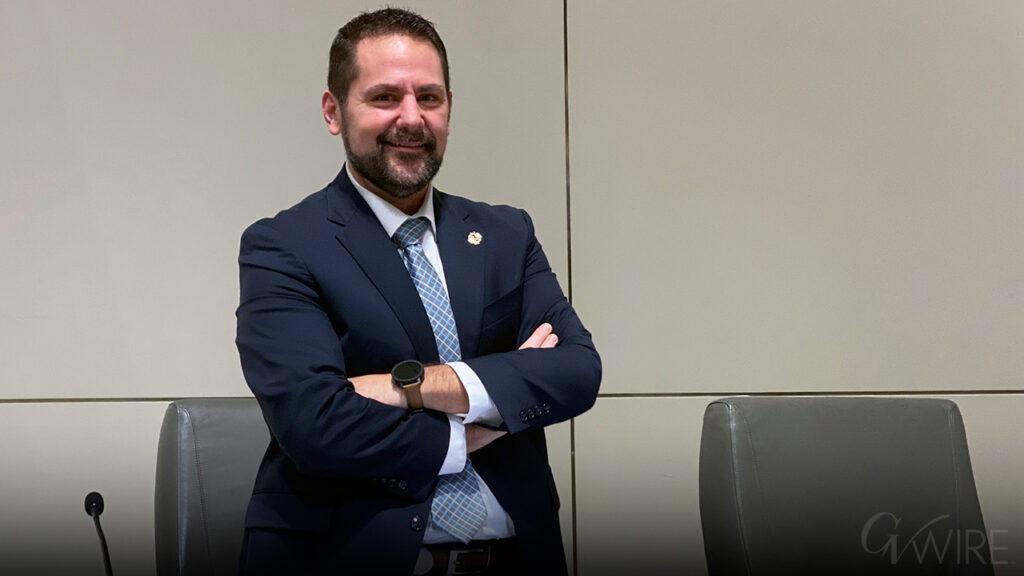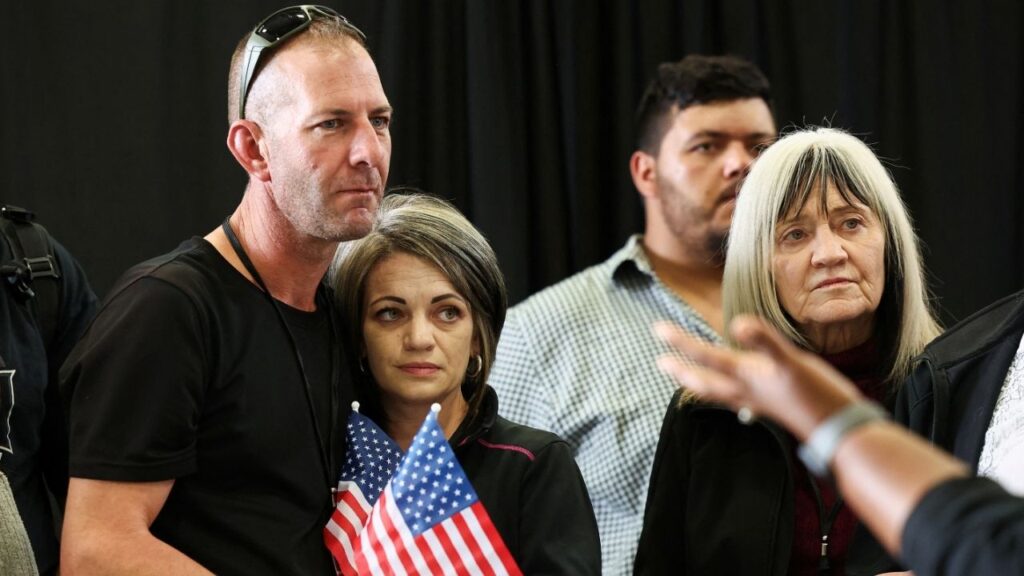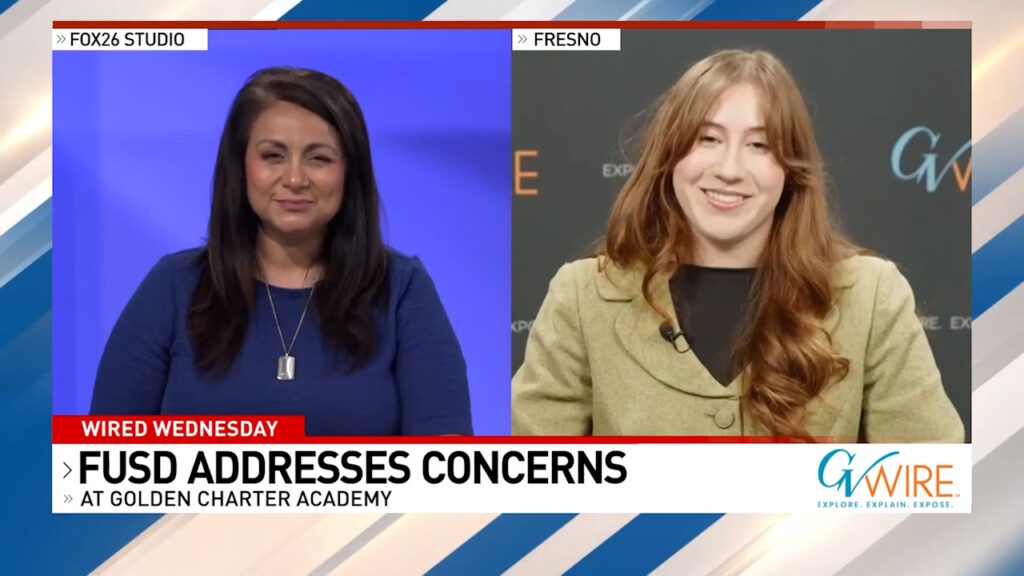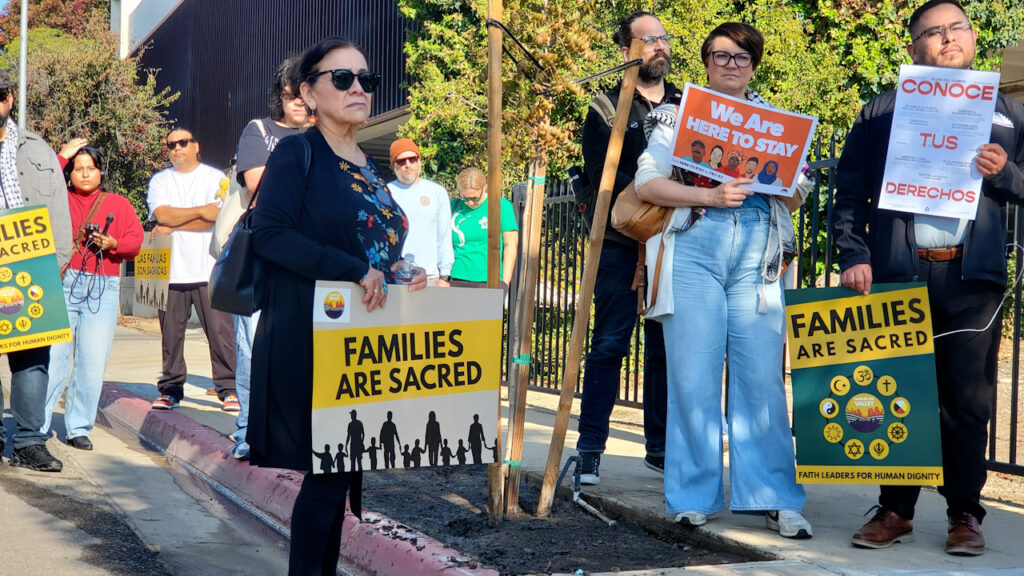An apparent change to the city of Fresno's vehicle miles traveled plan exempts grocery stores from a tax on outward growth. (GV Wire Composite)

- An apparent change to the city of Fresno's plan exempts grocery stores from its proposed tax on outward growth.
- Residents in many parts of Fresno live in food deserts, needing retail options near them.
- The city's vehicle miles traveled tax could discourage the growth retailers want to see before coming to an area.
Share
|
Getting your Trinity Audio player ready...
|
What appears to be a last-minute change to the city of Fresno’s future tax on development exempts grocery stores from a potential million-dollar assessment.
While the exemption — potentially critical to curing Fresno’s “food deserts” — does not appear in any city documents searched by GV Wire, city spokesperson Sontaya Rose told GV Wire on Wednesday that grocery stores at or below 50,000 square-feet would now not be hit with the “vehicle miles traveled” tax up for consideration Thursday by Fresno City Council.
Part of the VMT debate includes a discussion on how the potentially million-dollar tax could affect attracting retail stores to areas lacking shopping options close to home.
At the Oct. 16 meeting, when councilmembers got their first public view of the city’s long-awaited plan, Fresno City Councilmember Miguel Arias asked about how it would affect landing long-needed retail anchors in south Fresno neighborhoods.
“Residents have been asking me for a Walmart or grocery store in southwest Fresno because they’ve been traveling to north Fresno for the grocery stores,” Arias said. “Now I have to tell them that to bring their business, I’ve got to charge them millions of dollars in fees because they’re in a part of town that doesn’t have any development.”
Arias did not respond to a request for comment about the city’s decision to exempt grocery stores.
Rose did not answer follow-up questions about how VMT would affect big-box retailers such as Walmart. However, she said that one in the mixed-use West Creek Village near the Fresno City College West campus would not be taxed because of an intact development agreement.
Calls to James Shehadey and Sylvesta Hall, developers on the project, were not returned.
Slowing Residential Growth Complicates Retail Development: Chavez
The city at that meeting did not inform Arias of the grocery store exemption. Questions to the city about when the exemption was written were not immediately answered.
However, exempting grocery stores from the potential tax may only be part of the battle to get more healthy food options in Fresno. The VMT tax’s biggest target is residential construction, adding thousands of dollars to tens of thousands of dollars to each home or apartment built — depending on how far they are from job centers, shopping, or schools.
Fresno County Supervisor and former Fresno City Councilmember Luis Chavez, who said he’s very familiar with the city’s VMT plan, said the measure not only affects food deserts by charging developers more, but it discourages the growth that retailers need to see to justify investment in an area.
He said the city should consider subsidizing some retail development.
“Southwest Fresno has been screaming at the top of their lungs for a grocery store out there and it’s very difficult for anybody to get them just because of the (lack of) rooftops with discretionary spending,” Chavez said. “If we don’t have housing out there, we don’t have rooftops and it makes it that much harder for them to locate in that location.”
SW Fresno Residents Drive Long Ways for Amenities: Walker
For years, community advocates have called for grocery stores and big-box stores such as Walmart to come into southeast and southwest Fresno.

“We would be reducing VMT if we had more amenities in our communities. And to attract those amenities, we need more rooftops but also investment in infrastructure.” — Allysunn Walker, CEO, Southwest Fresno Development Corp.
Allysunn Walker, CEO of the Southwest Fresno Development Corp. said people in the area often have to drive long distances to shop for basic needs.
“What is it going to take to bring amenities to our community? There is a hoarding of amenities in north Fresno, how do we equitably distribute amenities so we can get rid of these malignant and unmet needs in southwest and southeast Fresno?” Walker told GV Wire.
Getting retail into parts of town beset by poor food options has challenges beyond the city’s VMT tax, Walker said. Not having enough rooftops, infrastructure, or disposable income puts the area further down on the list for retailers analyzing where to locate, but a potential multi-million dollar tax adds another obstacle.
While VMT was designed to reduce how much people drive, raising barriers to new retail in the area could increase vehicle travel, she said.
“We would be reducing VMT if we had more amenities in our communities,” Walker said. “And to attract those amenities, we need more rooftops but also investment in infrastructure.”
All VMT Will Do is ‘Create Problems’: Fena
The city’s VMT plan — based on 2012’s SB 743 — assesses new projects by assigning a score of how many miles people would need to drive from there to home, work, or school. The farther away a job center is from a neighborhood, and vice versa, the higher the assessment.

“The Central Valley is the only area in the state that has still expansion land. If they want more people to flee out of California, then they’ll enact something like this.” — Bobby Fena, senior VP, Colliers International
The plan was presented as a way to make development easier, and many builders praised the plan as expediting home construction.
Zach Gomes, chairman of the board of the Building Industry Association and vice president of Bonadelle Homes, said the plan provides certainty for builders.
“We look forward to a quick implementation of the VMT program as this is something that the building industry needs to move the community forward with certainty,” Gomes said.
Several real estate brokers contacted by GV Wire did not know about the VMT plan.
Fees will vary from project to project, said city manager Georgeanne White at the Oct. 16 meeting.
An example in the city’s study shows a retail project at Fresno and Nees avenues — an infill lot surrounded by jobs, shopping, and homes — being assessed $950,000 for the travel miles it’s expected to bring.
Commercial real estate broker and Colliers International senior vice president Bobby Fena said he hasn’t seen anything like this in his 50-year career.
“If they’re going to try to add something like this, all it’s going to do is create problems,” Fena said. “The Central Valley is the only area in the state that has still expansion land. If they want more people to flee out of California, then they’ll enact something like this.”
Other Cities Not Implementing VMT Fees
Other cities don’t have VMT fees. Clovis doesn’t assess new development VMT fees, said a city spokesperson. Other communities such as San Bernadino have chosen not to implement VMT fees, said Dan Dunmoyer, president and CEO of the California Building Industry Association.
“They just say we’re not taking it into account,” Dunmoyer said. “We think it’s too complicated and we’re not going to collect any new fees.”
RELATED TOPICS:
Categories

US Treasury’s Bessent Says China Has Approved TikTok Transfer Deal



















